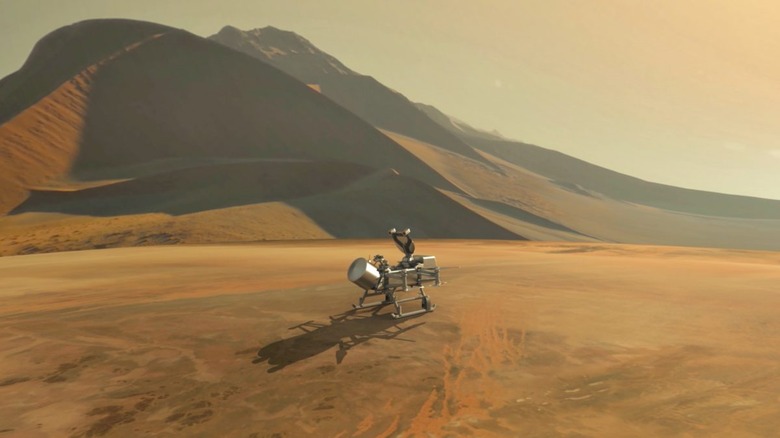NASA Dragonfly Mission Objectives For 'Explorer's Utopia' Titan Detailed
NASA's upcoming Dragonfly mission will send a spacecraft to Titan, the intriguing Saturn moon that researchers have described as an 'explorer's utopia.' A newly published study has detailed the broad mission objectives the Dragonfly team will focus on, noting that the planned exploration goals are broad at this time because so much about the moon remains a mystery.
Unlike our own barren moon, Titan is planet-like in the sense that it has an atmosphere, weather system, and even liquid on the surface. That makes Saturn's moon an intriguing location to explore, particularly in an effort to find evidence of life elsewhere in the solar system.

Dragonfly is a rotorcraft relocatable lander that will arrive on Titan's surface in the middle of the next decade, marking the first surface exploration of the moon. Researchers behind the mission have detailed some of the focus for this future exploration, including looking for chemical biosignatures that indicate life.
As well, the scientists plan to explore Titan's methane cycle and investigate any prebiotic chemistry that may be actively taking place on the surface and/or in the moon's atmosphere. In a statement about the Dragonfly mission, Alex Hayes, the co-author of a study detailing the planned objectives, said:
Titan represents an explorer's utopia. The science questions we have for Titan are very broad because we don't know much about what is actually going on at the surface yet. For every question we answered during the Cassini mission's exploration of Titan from Saturn orbit, we gained 10 new ones.
